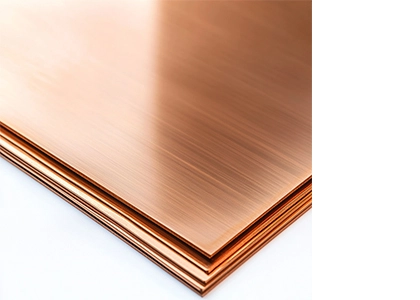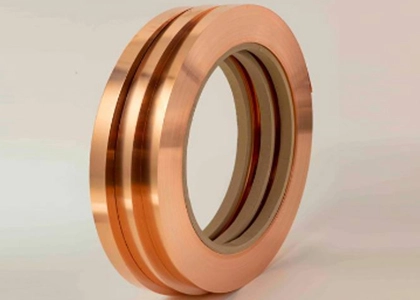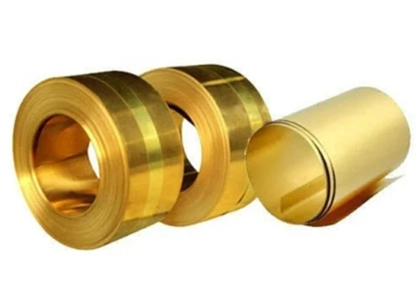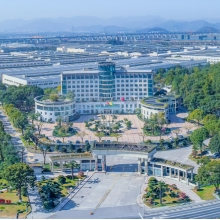Grade Designation & Standards
Standard Grade: CuSn6 (Phosphor Bronze)
International Equivalents:
Applicable Standards:
GB/T 5231-2012 (Wrought Copper Alloys)
ASTM B103 (U.S. Strip Standard)
EN 12163 (European Standard)
Product Features
1. Ultra-High Elasticity & Fatigue Resistance: Elastic limit ≥500 MPa, fatigue life >1 million cycles, ideal for high-frequency elastic components.
2. Exceptional Wear Resistance: Hardness (HV 150-250) surpasses low-tin bronzes, approaching beryllium bronze performance.
3. Superior Corrosion Resistance: Resists atmospheric, seawater, and weak acid corrosion (corrosion rate ≤0.005 mm/a).
4. Precision Machinability: Supports cold/hot working, welding, and plating; surface finish up to Ra 0.2μm.
Common Product Forms & Dimensions
Product Form | Size Range | Delivery Condition |
Strip | Thickness: 0.05-2.0mm, Width ≤600mm | Soft (M), Hard (H) |
Rod | Diameter: 5-150mm, Length: 2-6m | Drawn, Hot-Rolled |
Wire | Diameter: 0.05-8.0mm | Coiled or Straight |
Tube | OD: 3-200mm, Wall Thickness: 0.5-20mm | Cold-Drawn, Half-Hard |
Chemical Composition
Element | Content (%) | Function/Limit |
Cu | Balance (≥93.5%) | Base material, ensures conductivity and corrosion resistance |
Sn | 5.5-7.0 | Enhances elasticity, wear resistance, and corrosion resistance |
P | 0.1-0.35 | Deoxidizer, refines grain structure, prevents tin segregation |
Pb | ≤0.02 | Strictly controlled to avoid brittleness |
Impurities | ≤0.1 | Ensures high material purity |
Physical Properties
Property | Value | Remarks |
Density | 8.8-8.9 g/cm³ | High density for precision parts |
Electrical Conductivity | ~13% IACS | Suitable for electrical components |
Thermal Conductivity | 60-70 W/(m·K) | Moderate heat dissipation |
Thermal Expansion | 17.6×10⁻⁶/°C (20-200°C) | Excellent thermal stability |
Melting Point | 995-1020°C | Limited castability |
Mechanical Properties
Property | Soft (M) | Hard (H04) |
Tensile Strength (σb) | 400-600 MPa | 650-850 MPa |
Elongation (δ10) | ≥35% | ≥5% |
Hardness (HV) | 90-180 | 200-300 |
Elastic Modulus | ≥115 GPa | Critical for high-end springs |
Core Advantages
1. Optimal Performance Balance: Strength, elasticity, and corrosion resistance tailored for precision industrial applications.
2. Long Service Life: Exceptional fatigue resistance (>1 million cycles).
3. Surface Treatment Compatibility: Supports gold/silver plating, passivation, and coatings.
Product Applications
1. Electronics:
5G Devices: RF connector springs, EMI shielding components.
Semiconductor Testing: Probe card springs, chip contact points.
2. Mechanical Engineering:
Aerospace: Hydraulic valve plates, gyroscope springs (high-pressure and fatigue resistance).
Medical Devices: Endoscope springs, surgical tool joints (biocompatibility requirements).
3. Automotive:
High-Pressure Fuel Systems: Precision springs, sealing rings (corrosion and pressure resistance).
4. Marine Engineering:
Deep-Sea Equipment: Seawater-resistant valves, sensor components (longevity in harsh environments).
Processing Guidelines
1. Annealing: Post-cold working, anneal at 650-750°C for 1-2 hours to relieve stress.
2. Welding: Laser or electron beam welding preferred to minimize heat-affected zone brittleness.
3. Machining: Cutting speed ≤50 m/min; use carbide tools with oil-based coolant.
4. Surface Preparation: Clean surfaces thoroughly before plating to ensure coating adhesion.
Key Application Scenarios
Precision Springs: Medical devices, optical instruments.
Wear-Resistant Components: Bearings, gears, bushings.
Corrosion-Resistant Systems: Seawater desalination plants, chemical valves.
FAQs of CuSn6 Material
Q: How does Cu Sn 6 differ from Cu Sn 5?
A: CuSn6 bronze has higher tin content (5.5-7.0% vs. 4.5-5.5%), offering superior elasticity and wear resistance but at a higher cost.
Q: Is CuSn6 suitable for high-temperature environments?
A: Long-term use is recommended ≤150°C; short-term tolerance up to 250°C. Avoid exceeding 300°C to prevent softening.
Q: How to prevent edge cracking during cold rolling?
A: Limit single-pass deformation to ≤15%, perform stress-relief annealing, and ensure smooth roller surfaces.
Standard References
Chemical Composition: GB/T 5231-2012, ASTM B103.
Mechanical Testing: EN 12163, JIS H3270 (Rod Standard).
Processing: ISO 426-2 (International Manufacturing Guidelines).
Note: Data consolidated from national standards and industry technical documents. Actual performance may vary slightly due to manufacturing processes. Always refer to supplier test reports for precise specifications.

 English
English 한국어
한국어 français
français Deutsch
Deutsch Español
Español italiano
italiano العربية
العربية tiếng việt
tiếng việt Türkçe
Türkçe ไทย
ไทย 中文
中文









